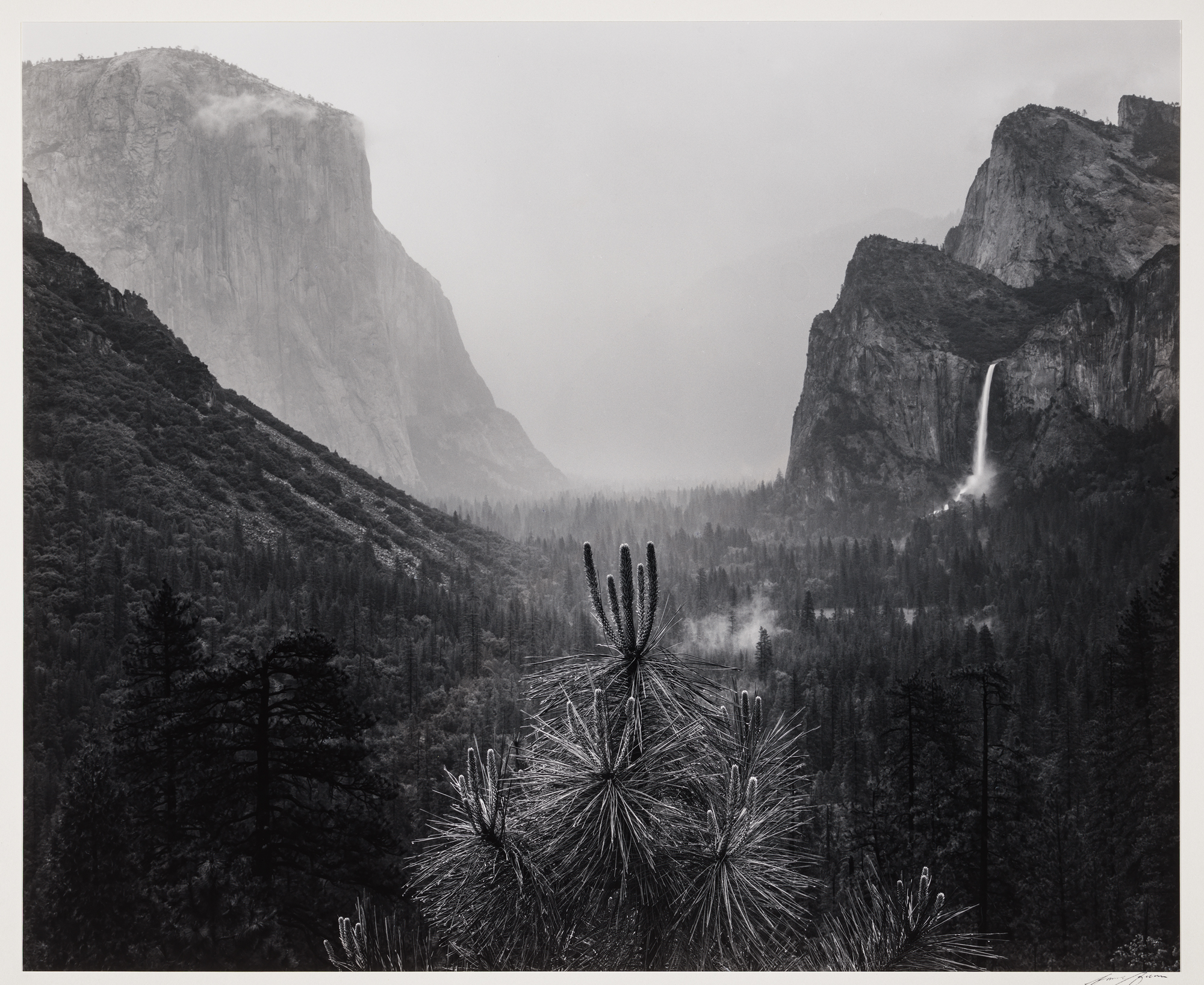“When most people think of Yosemite,” said Karen Haas, Lane curator of photographs at the Museum of Fine Arts, Boston, “the black-and-white image they have in their head is Ansel Adams.”
The fame—and ubiquity—of Adams created a predicament for the curator who organized “Ansel Adams in Our Time,” a new exhibition opening April 8 at the de Young Museum. How do you say something new about an artist who is so well-known?
Haas found her answer by bringing the famed landscape photographer forward in time and placing Adams in context with other contemporary artists.
The results are surprising.
The aperture of Adams’s work opens up, challenging assumptions and offering new perspectives. While he may be most associated with those highly textured, gelatin prints of Yosemite, the San Francisco-born photographer had wide-ranging interests.
“His distinctive style was not developed in isolation,” Haas said.
Adams loved capturing cemeteries—his favorite was Laurel Hill in the Richmond District before the city’s burial grounds were moved to Colma in the 1930s—and even urban scenes like freeways and graffiti. He spent time photographing not only Yosemite but also Death Valley and Owens Valley, where he made images of Japanese internment camps. He didn’t work only in black-and-white, but also embraced Kodak and Polaroid.
Yet it’s the juxtaposition of Adams with 23 contemporary artists that makes for some of the most striking connections in the exhibition, whether it’s the work of Abelardo Morell—who projects natural landscapes onto asphalt and photographs the ground—or Mark Klett, who inserts work of earlier photographers (including Adams) directly alongside his own contemporary views.
The expansive, multifaceted exhibition is a true homecoming. Not only was Adams born in San Francisco, he had his first solo museum exhibition at the de Young in 1932.
Adams grew up in the Sea Cliff neighborhood of San Francisco in a house built on sand dunes in 1903 (the house neighboring his was destroyed by a storm-induced sinkhole in 1995).
The photographer made his first trip to Yosemite when he was just 14—and traveled there yearly after that (it’s also where he met his wife). As an active member of the Sierra Club who served as the organization’s photographer, Adams quickly built fame for his striking landscapes of the natural world. It didn’t hurt that he was also effective in marketing, another surprisingly modern aspect of his career.
“It’s time to bring him forward in time,” Haas said.
Ansel Adams in Our Time
📍 de Young Museum, 50 Hagiwara Tea Garden Drive
🗓️ April 8 through July 23
🔗 famsf.org
